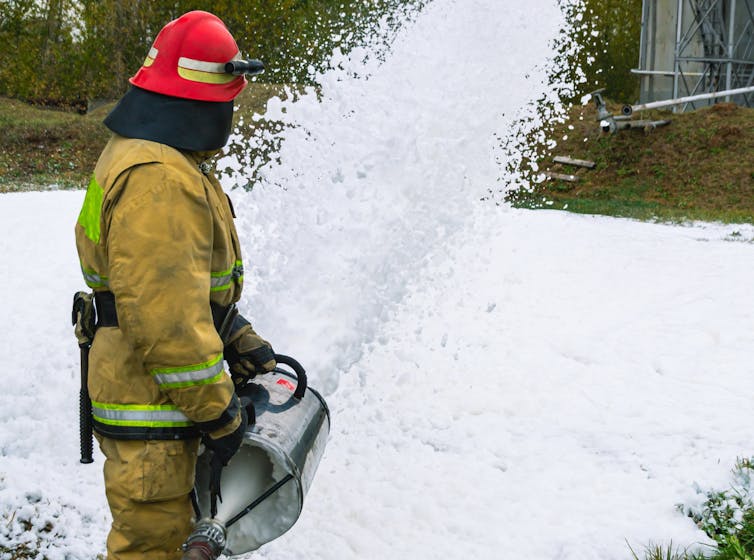Wednesday, 29 May 2024
Wednesday, 22 May 2024
The value of supportive care oncology for cancer
Exercise, therapy and diet can all improve life during cancer treatment and boost survival. Here’s how

With so many high-profile people diagnosed with cancer we are confronted with the stark reality the disease can strike any of us at any time. There are also reports certain cancers are increasing among younger people in their 30s and 40s.
On the positive side, medical treatments for cancer are advancing very rapidly. Survival rates are improving greatly and some cancers are now being managed more as long-term chronic diseases rather than illnesses that will rapidly claim a patient’s life.
The mainstays of cancer treatment remain surgery, chemotherapy, radiation therapy, immunotherapy, targeted therapy and hormone therapy. But there are other treatments and strategies – “adjunct” or supportive cancer care – that can have a powerful impact on a patient’s quality of life, survival and experience during cancer treatment.
Keep moving if you can
Physical exercise is now recognised as a medicine. It can be tailored to the patient and their health issues to stimulate the body and build an internal environment where cancer is less likely to flourish. It does this in a number of ways.
Exercise provides a strong stimulus to our immune system, increasing the number of cancer-fighting immune cells in our blood circulation and infusing these into the tumour tissue to identify and kill cancer cells.
Our skeletal muscles (those attached to bone for movement) release signalling molecules called myokines. The larger the muscle mass, the more myokines are released – even when a person is at rest. However, during and immediately after bouts of exercise, a further surge of myokines is secreted into the bloodstream. Myokines attach to immune cells, stimulating them to be better “hunter-killers”. Myokines also signal directly to cancer cells slowing their growth and causing cell death.
Exercise can also greatly reduce the side effects of cancer treatment such as fatigue, muscle and bone loss, and fat gain. And it reduces the risk of developing other chronic diseases such as heart disease and type 2 diabetes. Exercise can maintain or improve quality of life and mental health for patients with cancer.
Emerging research evidence indicates exercise might increase the effectiveness of mainstream treatments such as chemotherapy and radiation therapy. Exercise is certainly essential for preparing the patient for any surgery to increase cardio-respiratory fitness, reduce systemic inflammation, and increase muscle mass, strength and physical function, and then rehabilitating them after surgery.
These mechanisms explain why cancer patients who are physically active have much better survival outcomes with the relative risk of death from cancer reduced by as much as 40–50%.
Mental health helps
The second “tool” which has a major role in cancer management is psycho-oncology. It involves the psychological, social, behavioural and emotional aspects of cancer for not only the patient but also their carers and family. The aim is to maintain or improve quality of life and mental health aspects such as emotional distress, anxiety, depression, sexual health, coping strategies, personal identity and relationships.
Supporting quality of life and happiness is important on their own, but these barometers can also impact a patient’s physical health, response to exercise medicine, resilience to disease and to treatments.
If a patient is highly distressed or anxious, their body can enter a flight or fight response. This creates an internal environment that is actually supportive of cancer progression through hormonal and inflammatory mechanisms. So it’s essential their mental health is supported.

Putting the good things in: diet
A third therapy in the supportive cancer care toolbox is diet. A healthy diet can support the body to fight cancer and help it tolerate and recover from medical or surgical treatments.
Inflammation provides a more fertile environment for cancer cells. If a patient is overweight with excessive fat tissue then a diet to reduce fat which is also anti-inflammatory can be very helpful. This generally means avoiding processed foods and eating predominantly fresh food, locally sourced and mostly plant based.

Muscle loss is a side effect of all cancer treatments. Resistance training exercise can help but people may need protein supplements or diet changes to make sure they get enough protein to build muscle. Older age and cancer treatments may reduce both the intake of protein and compromise absorption so supplementation may be indicated.
Depending on the cancer and treatment, some patients may require highly specialised diet therapy. Some cancers such as pancreatic, stomach, esophageal, and lung cancer can cause rapid and uncontrolled drops in body weight. This is called cachexia and needs careful management.
Other cancers and treatments such as hormone therapy can cause rapid weight gain. This also needs careful monitoring and guidance so that, when a patient is clear of cancer, they are not left with higher risks of other health problems such as cardiovascular disease and metabolic syndrome (a cluster of conditions that boost your risk of heart disease, stroke and type 2 diabetes).
Working as a team
These are three of the most powerful tools in the supportive care toolbox for people with cancer. None of them are “cures” for cancer, alone or together. But they can work in tandem with medical treatments to greatly improve outcomes for patients.
If you or someone you care about has cancer, national and state cancer councils and cancer-specific organisations can provide support.
For exercise medicine support it is best to consult with an accredited exercise physiologist, for diet therapy an accredited practising dietitian and mental health support with a registered psychologist. Some of these services are supported through Medicare on referral from a general practitioner.
For free and confidential cancer support call the Cancer Council on 13 11 20.![]()
Rob Newton, Professor of Exercise Medicine, Edith Cowan University
This article is republished from The Conversation under a Creative Commons license. Read the original article.
Sunday, 19 May 2024
Artificial Intelligence - the potential threat is wildly underestimated
 |
| Shutterstock |
As artificial intelligence (AI) is now being rolled out across multiple platforms and usages, the warning from key people in the industry should take on a stronger emphasis. In May 2023, hundreds of industry leaders from Open AI, GoogleDeepMind, Anthropic and other key technology companies issued a stark warning on the risks of AI and the need for a pause in AI deployment, new laws and Government regulatory oversight.
- smart assistants
- automated self driving vehicles
- virtual travel assistants
- marketing chatbots
- manufacturing robots
- healthcare management
- automated financial investing
- misuse of AI by criminal groups (which already occurs in part)
- using AI as a weapon by state actors for the furtherance of strategic or tactical gain
- machine learning growing exponentially such that the programmers and code writers no longer are able to understand what is being produced
- machine to machine learning whereby the links between software produces inherent errors or unforseen negative effects
- high speed decision making by AI which are difficult for humans to prevent or rectify.
 |
| Shutterstock - AI generated |
The first example, is a Major-General in the British Army circa early 20th century being a historical photograph. The second example is printed below and serves as a complete contrast, being a young woman in evening dress with a shawl. There are technical errors contained in these images however much more sophisticated versions are possible from more complex AI systems. It is easy to see how deep image fakes of known public figures can be produced with minimal effort.
 |
| Shutterstock - AI generated |
Friday, 10 May 2024
PFAS - the forever global contamination
 |
| Shutterstock |
- Water and stain protection for carpets, fabric, furniture and apparel
- Paper coating (including a range of food packaging)
- Metal plating
- Photographic materials
- Aviation hydraulic fluid
- Cosmetics and sunscreen
- Medical devices
- Ingredients in fire-fighting foam (a particular substance of impact in Australia)
For further information click here: Australian Government PFAS website
Monday, 29 April 2024
PFAS chemicals
Chemicals, forever: how do you fix a problem like PFAS?

A landmark legal settlement has once again focused our attention on the dangers of “forever chemicals”.
This class of chemicals, technically known as per-and polyfluoroalkyl substances, or PFAS, are widely used to make nonstick or waterproof products. The problem is, the chemicals move easily around the environment, pollute groundwater and rivers, are often carcinogenic – and they don’t degrade.
This month, one of the largest makers of these chemicals, 3M, had its offer of A$16 billion to clean up PFAS-contaminated waterways approved by a US court. It’s just the latest in a series of PFAS lawsuits across the United States.
While increased attention is welcome, there’s no guarantee of success. Removing and destroying PFAS from wastewater streams across a single US state, Minnesota, would cost a minimum of $21 billion over 20 years. Globally, a recent report by the chemical safety nonprofit ChemSec found the costs of PFAS remediation alone amount to around $26 trillion per year – not including rising healthcare costs from exposure to PFAS, or damage to the environment. The 3M settlement is just the tip of the iceberg.
The problem now is how to actually clean up these chemicals – and prevent further pollution.
Remediation is expensive – and uncertain
In Australia, contamination is worst in firefighter training grounds and on defence force bases, due to the long-term use of firefighting foams full of PFAS. The discovery of this contamination triggered a wave of lawsuits. The Department of Defence has since paid out more than $366 million in class action lawsuits.
Defence has also assumed responsibility for managing, remediating and monitoring PFAS contamination on and around its bases. In 2021, the department began to actively set about remediation.
That sounds promising – find the pollution and fix the problem. But the reality is much more complicated.
A 2022 parliamentary inquiry described PFAS remediation as an emerging and experimental industry.
This is correct. There’s a great deal of basic scientific research we have to do. This is not a simple problem. These chemicals seep into the soil and groundwater – and stay there. It’s hard to get them out.
As a result, most remediation work at defence bases to date has been part of research and development, rather than a wide-scale permanent cleanup.
To help, the defence department has brought in three major industry partners, including Emerging Compounds Treatment Technologies. We don’t know how they are doing the cleanup or if their methods work, as this information is not publicly accessible. The three companies have sought intellectual property protection to support their technological advantage in the growing PFAS remediation market.
One of the companies, Venetia, told the parliamentary inquiry:
[there] are still significant gaps in knowledge in keys areas such as human health toxicology, PFAS behaviour in the environment and remediation of PFAS in soil and water
PFAS is a much bigger problem
Significant PFAS contamination has now been reported in:
– Melbourne’s West Gate Tunnel construction site. Soil contamination at the most polluted site is hundreds of times worse than a threshold set by the state’s environmental protection agency
– Western Australian mines
– WA waste management facilities
– Southeast Queensland water reclamation plants
– Perth’s public and private airports
– Operating and closed landfills.
The full extent of PFAS contamination in Australia is still emerging. Recent research has found Australia is one of several toxic hotspots for PFAS, relative to the rest of the world.
Worse, current monitoring practices are likely to be underestimating how much PFAS is lingering in the environment, given we usually only track a handful of these chemicals – out of more than 16,000.
Experts have called for:
improved understanding of the range of PFAS embodied in consumer and industrial products […] to assess the environmental burden and develop mitigation measures
The more we look, the more alarming the picture appears. Emerging research has found PFAS in consumer products such as cosmetics, packaging, waterproofing, inks, pesticides, medical articles, polishes and paints, metal plating, pipes and cables, mechanical components, electronics, solar cells, textiles and carpets.
The size and complexity of PFAS contamination suggests we are in for a very long and expensive process to begin cleaning it up – especially given we are still making and using these chemicals.
How should we respond?
To start addressing the problem, here are three important steps.
1. Introduce a “polluter pays” principle.
The introduction of this concept is what forced 3M to pay up in the US. Australia has yet to follow suit, which is why the public has been footing the bill. If we introduce this legal principle, manufacturers will have to take responsibility. This would make it much less attractive for companies to make polluting products – and shift the burden from taxpayers to the companies responsible. Australia’s government is considering pursuing similar legal action against 3M.
2. Set PFAS contamination standards in line with other OECD countries, or better.
Earlier this month, the US implemented the first legally enforceable national drinking water standards for five PFAS compounds and two PFAS mixtures. Australia’s current acceptable drinking water guidelines allow up to 140 times more PFAS in our water than these strict new US standards. In the US, these new standards are drawing new investment in remediation.
3. Take it seriously.
For years, many of us thought all you had to do to avoid PFAS was not to buy nonstick pans. But these chemicals are now everywhere. They’re highly persistent and don’t leave our bodies easily. Every single person on the planet is now likely to have detectable levels of PFAS in their blood. Reducing this dangerous chemical load is going to take a lot of work to clean up existing hotspots, stop further production, and prevent recirculation of PFAS in recycled products or in our food.
The 3M settlement is a good start. But it’s only a start. Tackling this problem is going to be hard, but necessary. ![]()
Sarah Wilson, PhD Candidate in Quantum Technology & Innovation Governance, Institue for Sustainable Futures, University of Technology Sydney and Rachael Wakefield-Rann, Senior Research Consultant, Institute for Sustainable Futures, University of Technology Sydney
This article is republished from The Conversation under a Creative Commons license. Read the original article.






